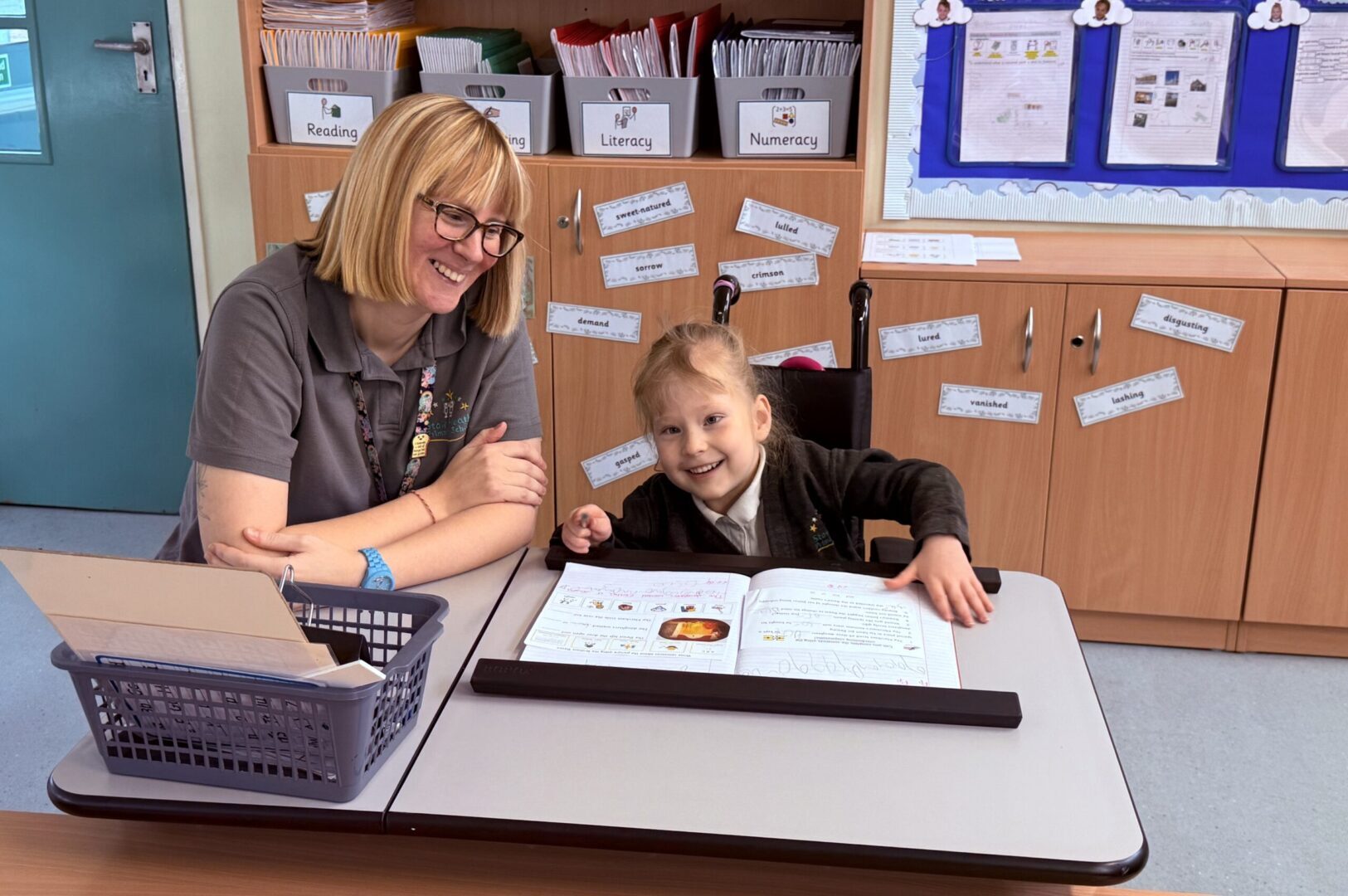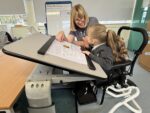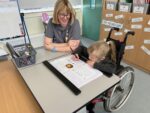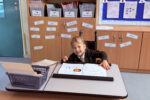CLIENT PROFILE AND CHALLENGES
Rosie is a bright and engaging 6-year-old who presents with a spinal curvature and uses a wheelchair for mobility. Due to her condition, she experiences significant difficulty with weight-bearing and requires support to access and engage in classroom activities. Previously, Rosie used a bespoke wooden table that, while functional in intent, inadvertently restricted her ability to participate fully. The table was cumbersome, limited her visibility in class, and prevented spontaneous engagement with peers and teaching staff. Access to essential items such as pencils, books, and learning resources was limited, impacting both her independence and her ability to learn alongside her classmates. Her learning environment was unintentionally excluding her – creating physical and social barriers that affected her confidence and development.
OCCUPATIONAL THERAPY INTERVENTION AND APPROACH
Recognising the importance of inclusive participation and self-directed learning, an occupational therapy assessment recommended the introduction of a more adaptable and responsive piece of classroom equipment. The aim was to provide Rosie with a workstation that could evolve with her, enabling her to take an active role in classroom life and reducing reliance on adults for basic tasks.
SOLUTION AND EQUIPMENT FEATURES
The Ropox Vision Table was chosen because of its versatile options.
-Height adjustability, ensuring that Rosie can maintain eye contact and engage with peers and staff without obstruction
-A tilting work surface (up to 71°), promoting optimal positioning for reading, writing, and visual access
-Magnetic fixings (MagRule system) to stabilise items and reduce frustration during tasks
-Ample under-table space to accommodate Rosie’s wheelchair, promoting comfort and functional alignment
These features support Rosie’s independence, improve her posture, and enhance her ability to focus and participate.
OUTCOMES AND BENEFITS
The impact has been significant. Rosie now actively participates in classroom activities with increased confidence and independence. She can access learning materials on her own, which has reduced her reliance on adults and helped her take ownership of her work. Rosie feels included among her peers, which has improved her social interactions and emotional well-being – key elements in a holistic approach to child development. Her teaching assistant, Lindsey, has noticed clear improvements in Rosie’s mood, engagement, and willingness to tackle tasks without help. The table has changed the classroom dynamic for Rosie from dependence to empowerment.
The Ropox Vision Table shows how inclusive equipment can remove barriers and help children thrive.





